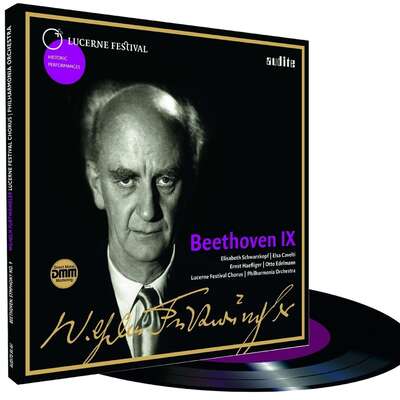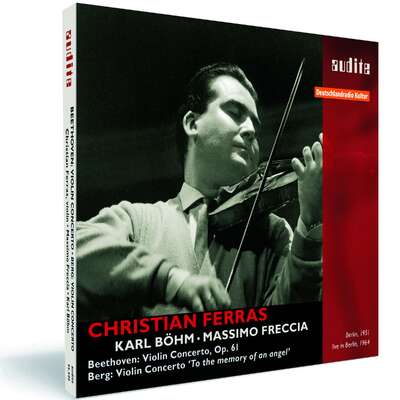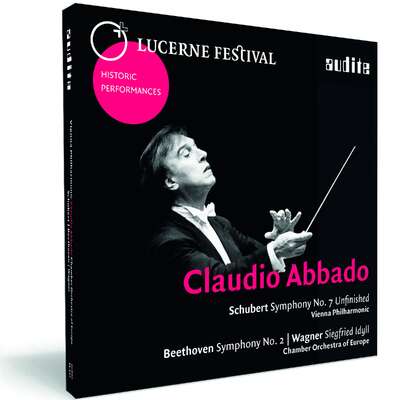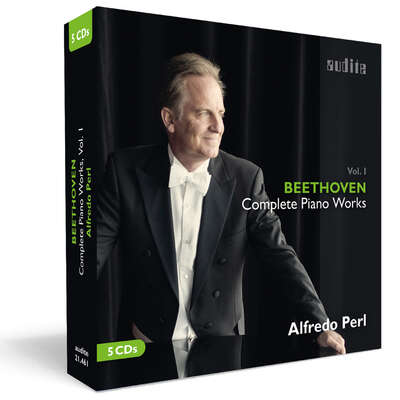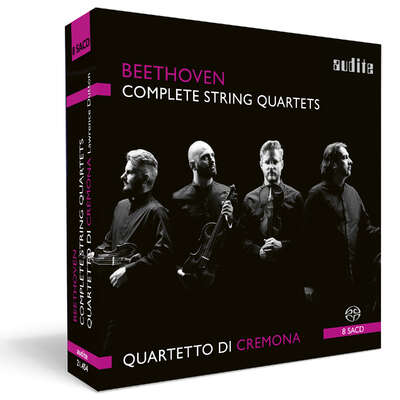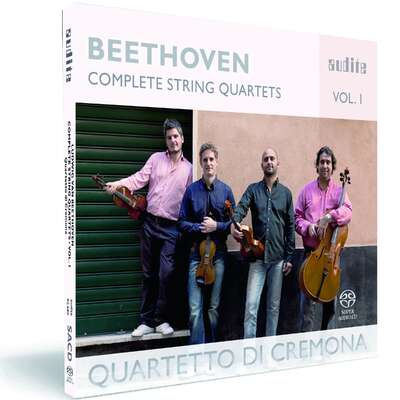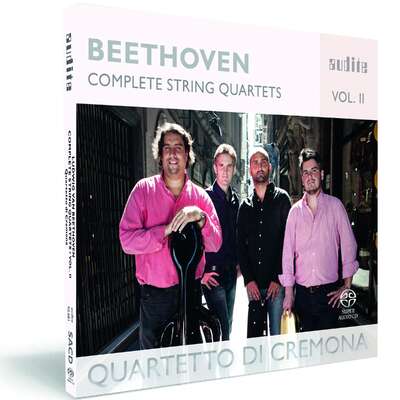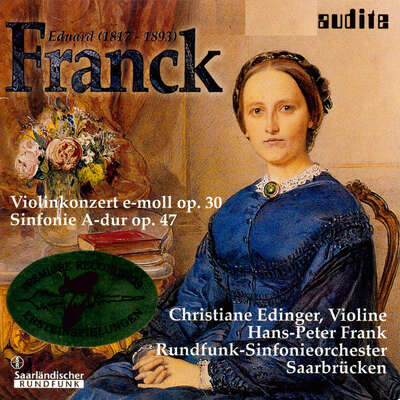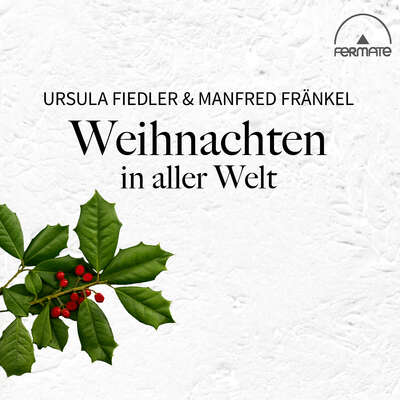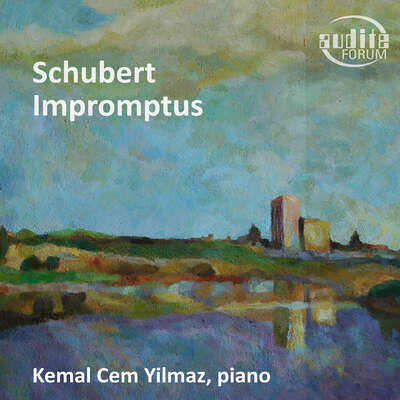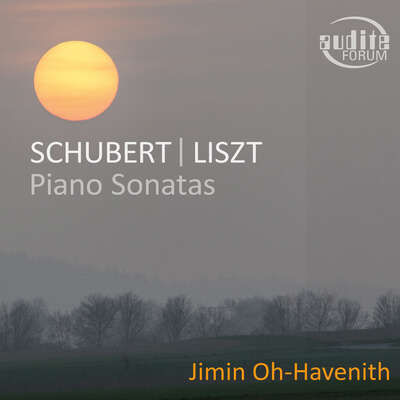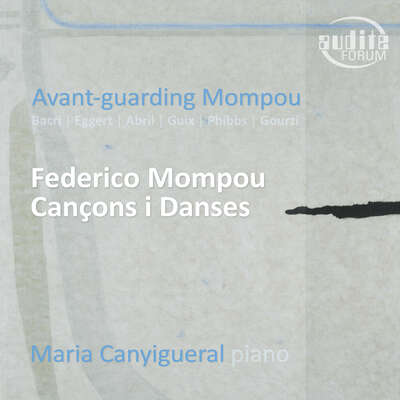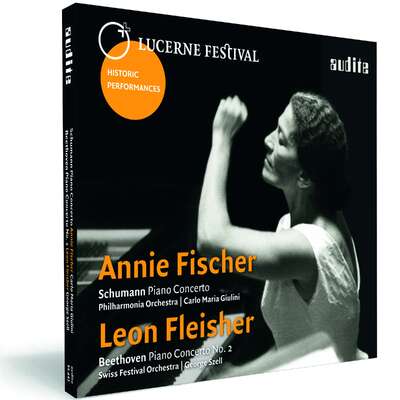
Extraordinary artists in extraordinary recordings on an extraordinary format: these are the criteria for audite’s LP releases. Hot off the press is Furtwängler’s last performance of Beethoven’s Ninth Symphony, now also available on premium 180g vinyl (DMM). more
Philharmonia Orchestra | Luzerner Festwochenchor
Wilhelm Furtwängler
"Dieses Dokument zählt gleichfalls zu den unverzichtbaren Götterfunken. [...] was Audite-Produzent Ludger Böckenhoff aus ihnen herausgeholt hat (inklusive akribischer Tonhöhenkorrekturen), deklassiert konkurrierende (Raub-)Pressungen." (Audio)
Track List
Details
|
Wilhelm Furtwängler conducts Beethoven's Symphony No. 9 on LP
LUCERNE FESTIVAL Historic Performances, Vol. VI |
|
| article number: | 80.461 |
|---|---|
| EAN barcode: | 4022143804617 |
| price group: | BCF |
| release date: | 4. September 2015 |
| total time: | 76 min. |
Informationen
Extraordinary artists in extraordinary recordings on an extraordinary format: these are the criteria for audite's LP releases. Hot off the press is Furtwängler's last performance of Beethoven's Ninth Symphony, now also available on premium 180g vinyl (DMM).
Wilhelm Furtwängler conducted Beethoven's Ninth Symphony more than a hundred times. In August 1954, three months before his death, he directed his last performance in Lucerne which proved to be an "elemental musical event" (Neue Zürcher Zeitung). Alongside the brilliant Philharmonia Orchestra and a stellar cast of soloists (Elisabeth Schwarzkopf, Elsa Cavelti, Ernst Haefliger and Otto Edelmann), Furtwängler accentuates the visionary character of this monumental score: he charges the outer movements with an almost unbearable sense of suspense and interprets the lyrical passages, especially the slow third movement, cantabile and in flexible tempi. Comparing this "Lucerne Ninth" to Furtwängler's other benchmark interpretations of the Ninth - such as his famous performances in Berlin (1942) and Bayreuth (1951) - allows for a closer examination of the constants and changes in his very subjective view of Beethoven's final symphony. For the release of this concert recording as part of the series "LUCERNE FESTIVAL Historic Performances", the original tapes from the archives of SRF Swiss Radio and Television have been newly re-mastered. The pitch has been adjusted anew so that the recording, for the first time, sounds as close to the original as possible - closer than ever before. This correction in pitch not only changes the lengths of the movements, but also the dramaturgy - the 3rd movement, for example, is almost 17 seconds longer than on comparable recordings, which considerably changes the musical expression.
Wilhelm Furtwängler (1886-1954), who spent the final years of his life in Clarens on Lake Geneva, was one of the defining artists of the Internationale Musikfestwochen Luzern, today's LUCERNE FESTIVAL. Whereas Arturo Toscanini played an important role during the festival's founding years of 1938/39, Furtwängler was instrumental in establishing it as one of the then small number of great festivals. In 1944, he came to Lucerne for the first time to conduct two concerts; from 1947 - after his conducting ban had been lifted - until his death he came to Lucerne each summer (with the exception of 1952) where he enjoyed a special status.
Reviews
Facebook | 01.05.2016 | Dr. Tsai | May 1, 2016 | source: https://www.face...
Chinesische Rezension siehe PDF!Mehr lesen
www.hifitest.de | April 2016 | April 1, 2016
Episch angelegte Neunte – der würdige Abschluss einer großen Dirigenten-Karriere. Gute Ausstattung und guter, restaurierter Klang machen aus dieser Aufnahme ein schönes Gesamtpaket.Mehr lesen
Record Geijutsu | JAN. 2016 | January 1, 2016
Japanische Rezension siehe PDF!Mehr lesen
Audio | 12/2015 | Lothar Brandt | December 1, 2015
Der Dirigenten-Titan Wilhelm Furtwängler mit der letzten seiner vielen überlieferten Aufnahmen von Beethovens Chorsymphonie, am 22. August 1954 inMehr lesen
Fono Forum | Oktober 2015 | Götz Thieme | October 1, 2015
Wie aus Samt
Reicher Vinyl-Herbst mit wehmütig machenden und froh stimmenden Veröffentlichungen, neuen und alten Aufnahmen. Eine Vinyl-Kolumne von Götz Thieme.
Jetzt ist schon wieder was passiert – um es mit Wolf Haas zu formulieren, der mit dem Satz einige seiner kauzigen Brenner-Romane würzt. DasMehr lesen
Ein anderer großer Solist ist am 30. August 70 geworden: der Geiger Itzhak Perlman. Er hat sich längst in die Geschichte des Violinspiels eingeschrieben, steht in einer Reihe mit Heifetz und Michael Rabin. Begleitend zur Geburtstags-Box von Warner (77 CDs) gibt es das 1995 entstandene Album "The Perlman Sound" auf Vinyl; mit kleinen Stücken von Kreisler, Wieniawski, Tschaikowski, die Perlmans große Kunst zum Leuchten bringen. Trotz Vollfettstufe mit konzentrierter Tongebung, intensivem Vibrato bei Massenets "Meditation", Rachmaninow "Vocalise" und de Sarasates "Zigeunerweisen" – das ist schlank gedacht, unsentimental, ohne Schluchzer gespielt. Ein Fest für den LP-Aficionado. Zum Schluss eine weitere editorische Großtat des mit den Originalbändern arbeitenden Tonmeisters Ludger Böckenhoff von Audite, herausgekommen auf SACD und Vinyl (großzügig verteilt auf zwei 180g-Platten): Wilhelm Furtwänglers letzter Liveauftritt mit Beethovens Neunter 1954 in Luzern, drei Monate vor seinem Tod. Durch den korrigierten Stimmton, ohne künstlichen Hall ist man direkt im Geschehen. Der Dirigent und das Philharmonia Orchestra müssen sich erst finden, die Pauke ist im Scherzo nicht immer auf dem Punkt, sticht aber nicht so heraus wie bei früheren Überspielungen – aber dann ist der Furtwängler-Sound da: mit der unvergleichlichen Ruhe der LP noch eine Idee mitreißender, bewegender.
www.musicweb-international.com | October 2015 | Stephen Greenbank | October 1, 2015
Last year, for our weekly feature ‘MusicWeb International Recommends’, reviewers were asked to nominate a version of Beethoven’s Ninth Symphony.Mehr lesen
According to Herbert Haffner, in his book about the conductor, Furtwängler performed the symphony 103 times, and there are about twelve extant taped performances. The conductor was averse to the sterile conditions afforded by the recording studio and, whilst he did make studio recordings of most of Beethoven’s symphonies, the ninth, together with the second are exceptions. With the former, he felt that it was a work that benefited from the spontaneity of the live event, and his recorded legacy of this particular symphony comprises live airings only. Berta Geissmar, his secretary and business manager, maintained that Furtwängler regarded a performance of the Ninth Symphony as 'a sacred occasion’. Another reason for his dislike of the studio stemmed from his animosity towards HMV’s producer Walter Legge who, in the conductor’s eyes, promoted his chief rival and bête noire, Karajan.
The significance of this 1954 performance is that it was Furtwängler’s last — he would be dead three months later. One can regard it as his valedictory pronouncement. I have been familiar with it for many years from the Tahra issue (FURT 1003), and it is the conductor’s finest realization of the Symphony. Aside from this, there are two other live airings which I’m particularly fond of: the 1942 Berlin Philharmonic, and the 1951 Bayreuth Festival. What gives this 1954 Lucerne Festival the edge is the improved sound, and the greater spiritual and transcendental qualities with which Furtwängler invests the score.
Despite the conductor’s failing health, the reading has vim and vigour, with no sense of fatigue. His stamina is evident in the muscularity, drive and pacing. Less visceral than in the 1942 Berlin performance, there is no terror or angst, and on the whole the effect is less frenetic. By 1954 there was an otherworldly and more profound spiritual dimension of nobility and humanity. Here, Furtwängler penetrates to the heart of the score, inspiring his players to a transcendental level. The Adagio is slower than we are used to today, but at no time does one detect a lack of pulse. The music just flows, unimpeded by bar lines until the trumpets enter at bar 120. Throughout the variations, transitions are negotiated superbly, with over-arching phrases. Any rubato that is applied is added tastefully and doesn’t stymie the fluidity of the line. The grandeur and drama of the finale is enhanced by a formidable vocal quartet and excellent choir. The Philharmonia are on top form, and Dennis Brain’s solo horn contribution in the Adagio is exemplary.
I’ve never heard the Audite CD version, but I did a head-to-head with my Tahra copy. The improvement in sound quality is remarkable on the LPs, which have a smoother, warmer and richer tone. The Tahra aural picture was coarse and rough-edged in comparison. The LPs also render enhanced spatial depth in the string tone, and the vocal contributions are more vivid and bright.
The 2 LPs are housed in a sturdy gatefold, and one movement of the Symphony is assigned to each side. Erich Singer’s informative annotations are in German, but translated into English. The sound quality is vivid, clear and spacious, with an expansive dynamic range, and I detected no congestion or overload in loud passages. Neither is there any hint of pre-echo. The LPs showcase the diaphanous woodwinds, burnished brass and rich velvet string tone, and all this adds to the potency and success of the mix. Audience noise in minimal. It is excellent in every way.
www.klassikerleben.de | Herbst 2015
Drei Monate vor seinem Tod dirigerite Furtwängler den Luzerner Festwochenchor und das Philharmonia Orchestra bei Beethovens 9. Sinfonie noch im August 1954. Seinen letzten Luzerner Auftritt bezeichnete die "Neue Zürcher Zeitung" damals als "musikalisches Elementarereignis". Für die Doppel-LP vin audite nun wurden die Originalbänder aus dem Archiv von SRF Schweizer Radio und Fernsehen neu remastert.Mehr lesen

